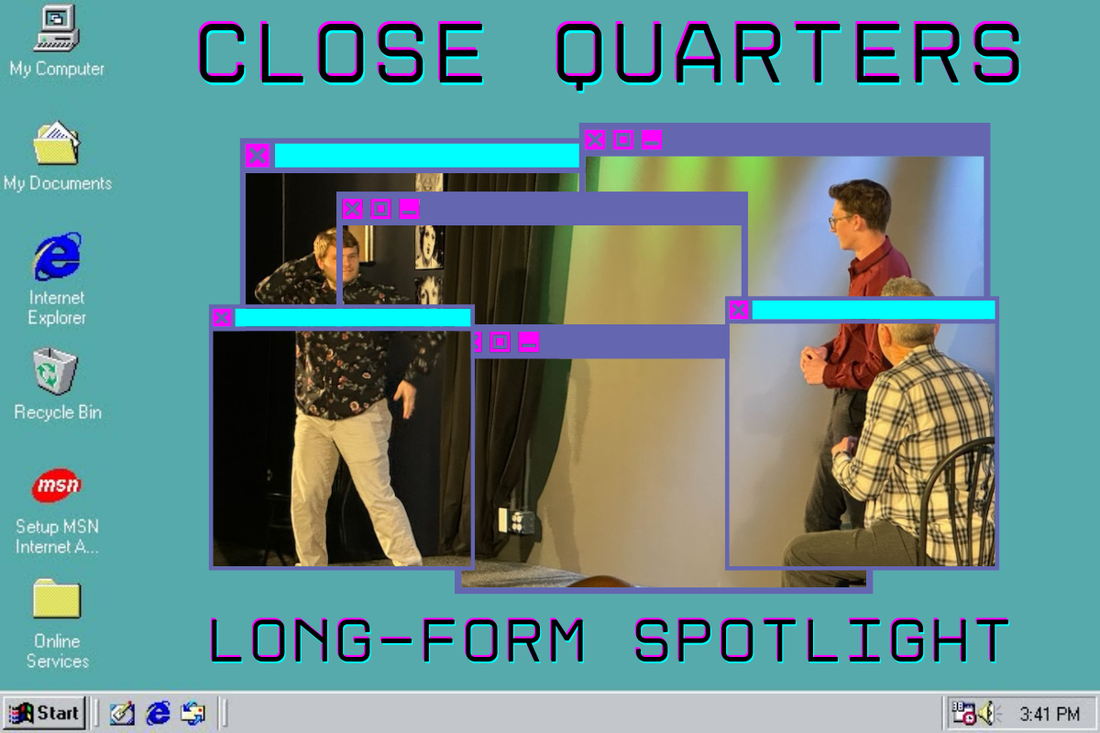Form Spotlight: "Close Quarters"

Written by Zoey Jodon
How many ways can the same moment be experienced?
Anna Eggleton recently guided improvisers through the “Close Quarters.” This improv form explores scenes within the same shared space and time, revealing how interlocking events can create a rich and profound structure for storytelling.
Narrowing Things Down
While documentation on the “Close Quarters” is sparse, one of its creators, Noah Gregoropoulos, has defined it with a poem:
Heighten characters by engaging,
think adjacent space when staging...
environments are rich with sound,
time collapses turning round...
when throwing forward sounds as cues,
a later payoff oft ensues...
Repeat some scenes where they've begun,
If all else fails, then just have fun!
The IRC Improv Wiki breaks the form into two main components; scene settings and character-heightening.
First, the wiki states that the “Close Quarters” restricts events to “scenes that are existing more or less simultaneously in adjacent spaces.”
This means improvisers are constrained to scenes that happen within about 15 minutes and 15 meters of each other. Characters, settings, and big events should overlap and interrupt each other to highlight the narrowed setting.
The form also rarely makes use of tapouts, which ensures that scenes don’t stray too far from the defined space.
Second, the wiki states that each scene should “build into a scene with 4-6 people on stage, all focused on heightening one person's character and showing different relationships they [have].”.
By restricting improvisers to a general area and timeframe, they are left to explore characters and relationships more thoroughly. This play style, sometimes referred to as “slow and low,” encourages grounded scenes that slowly heighten the characters and their situations.
An Expert Perspective
After successfully coaching their incubator team on the “Close Quarters,” Eggleton ran a 4-week intensive to share their insights with others.
Anna found themself drawn to the challenge of the form, as well as the nonlinear style of play it encourages. “I think it really pushes people to think outside this… regular thought around storytelling,” they said.
“I think most humans think extremely linearly and if not linearly just… one plane of existence of either it's happening now, in the past, or in the future,” they added.
The “Close Quarters” challenges that way of thinking by highlighting a secondary X-axis of time and space in storytelling.
These restrictions help tighten up play, and force improvisers to make better use of gifts given to them by their partners and prior scenes.
One of the most exciting aspects of improv is that you can experiment and share your own interpretations of any existing form.
“Hold on to assumption number five from “The Complete Improviser;” the audience does not know the rules of improv and will not judge you by those rules exactly,” Eggleton said.
If you want to learn more from Anna Eggleton, you can check out their “Activism in Comedy” workshop on May 23rd. As always, you can check out the theater’s workshops page for more information.
